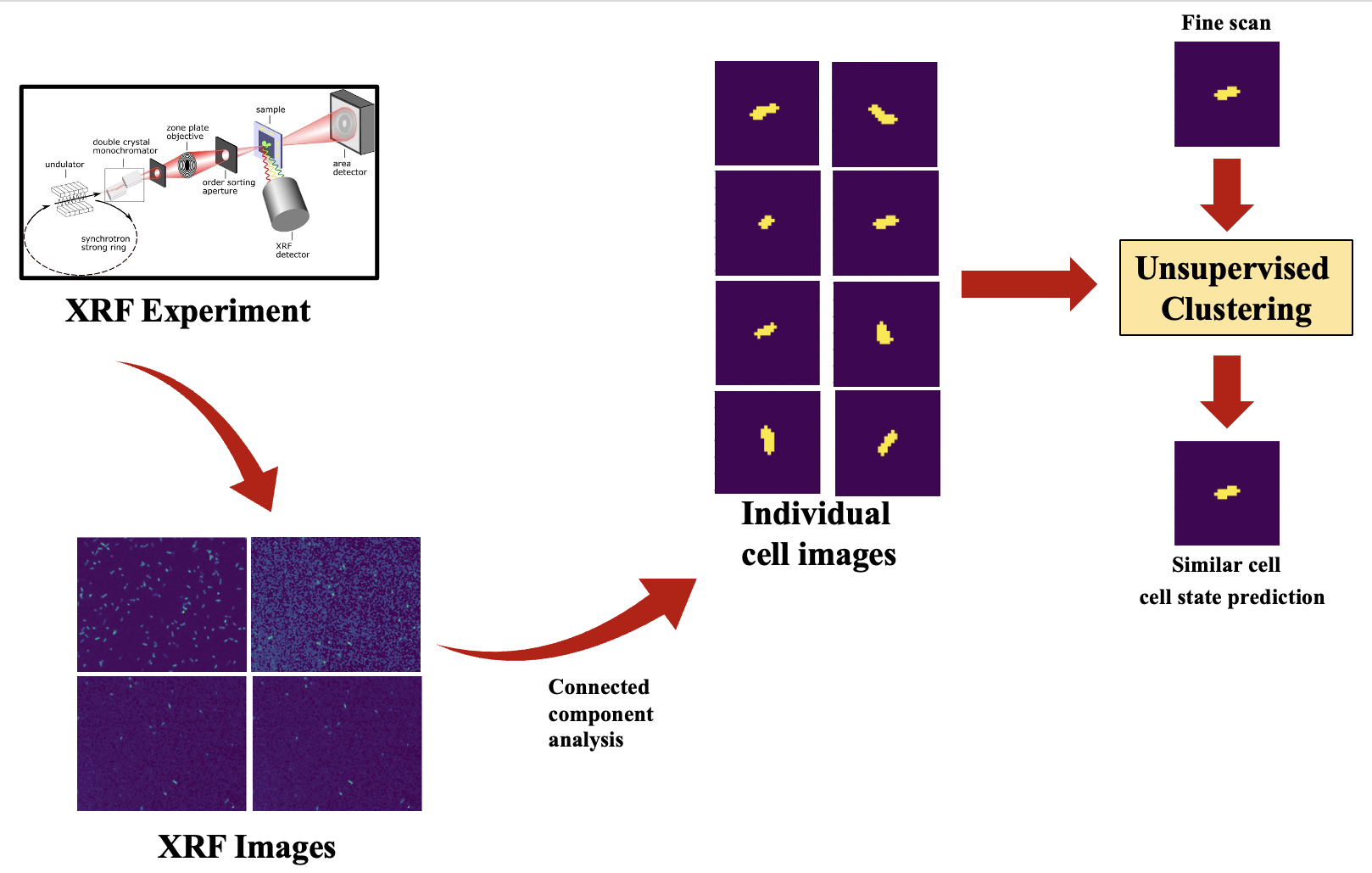Software for intelligently guiding X-ray fluorescence scans to regions of interest using a suite of ML-based clustering algorithms.
- git clone https://github.com/arshadzahangirchowdhury/ROI-Finder.git
- Install the packages via the AI_XRF_env.yml file.
- The GUI based example workflows contains a segmenter, an annotator and a recommender tool.
- Segmenter tool is used to select .h5 files containing XRF images and extract region of interests (cells).
- Annotator tool is used to bin the extracted cells in two groups, accepts or rejects corresponding to alive or dead cells.
The segmenter workflow is designed to identify and explore the parameters which affect the conversion process of images to binary images.
The annotator tool allows the user to bin the XRF images into two categories called "accepts" and "rejects". These two categories can correspond to "live" and "dead" bacterial cells respectively. The user can preview the extracted cells from the segmenter workflow and then use the buttons to annotate and bin the data into two groups. The annotated data is stored to the user's local hard drive inside the annotated_XRF folder. This directory must not be renamed or moved.
The recommender tool allows the user to select an AI method, based on which recommendations are given to the user based on bacterial cells which are similar to the selected cell.
The software is being developed for the users of the Bionanoprobe at the 9-ID beamline of the Advanced Photon Source (APS).
M Arshad Zahangir Chowdhury, DSL, Argonne National Laboratory
Aniket Tekawade, DSL, Argonne National Laboratory
Si Chen, XSD, Argonne National Laboratory
Grace Luo, XSD, Argonne National Laboratory
Zhengchun Liu, DSL, Argonne National Laboratory
Kiwon Ok, Michigan State University
Thomas O'Halloran, Michigan State University
Barry Lai, XSD, Argonne National Laboratory
Rajkumar Kettimuthu, DSL, Argonne National Laboratory
This project was funded by a Laboratory Directed Research and Development (LDRD) grant from Argonne National Laboratory.
